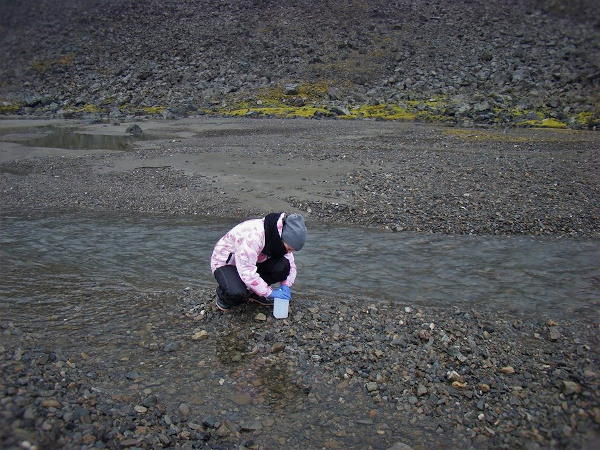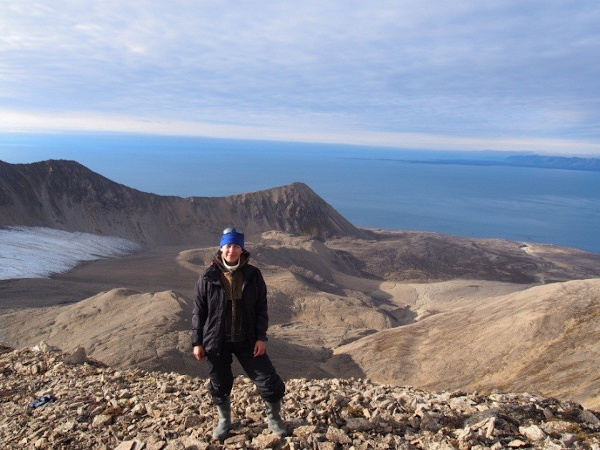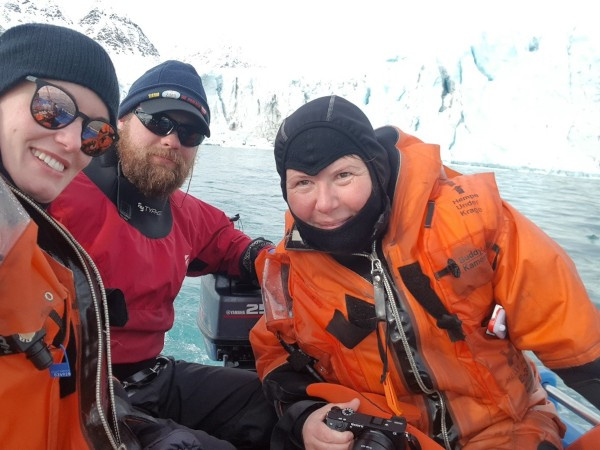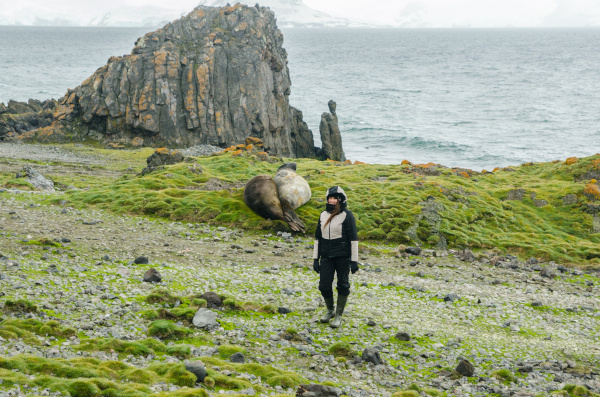
The Polish Polar Consortium (PKPol) is an agreement between scientific institutions, which have joint their efforts focused on polar research in order to better constrain changes occurring in the polar environment and their worldwide impacts. Gdansk University of Technology (Gdansk Tech) is a member of the Consortium. The representative in the Consortium for Gdansk Tech is Prof. Żaneta Polkowska, DSc, PhD, Eng.
The Polish Polar Consortium has been created for cooperation between the academic institutions conducting research in the polar regions. Conducting research in the Arctic is especially important due to the presence of persistent organic pollutants (POPs) from human activities, transported from lower latitudes, and the impact of such pollution on microbial life. Conducting chemical and microbiological analyses, aiming at the determination of habitat conditions, especially in terms of pollution levels, will allow to determine the impact of changeable habitat conditions, including the presence of POPs, on the bacterial population cell counts, cell size and population structure.
For the successful realisation of such reseach, collaboration with scientists representing various disciplines is key.

Our research is conducted in a few field sites in the Arctic and the Antarctic:
-
1. The first area, where we conduct our investigations, is the Revelva river catchment, located in the Wedel-Jarlsber Land in southern Spitsbergen Island (Svalbard Archipelago). The main river (Revelva) is fed by both precipitation and snow or ice melt (the latter originating from the small Arie glacier). Revelva drains into the Ariebukta Bay in the south, forming an estuary. In the upper part of the catchment, the main watercourses flow from the slopes of Eimfjellet (640 m asl) and Skålfjellet (635 m asl). The catchment of Revelva is asymmetrical, with a prevalence of left tributaries. The bottom of Revelva is covered mainly by pebbles, cobbles and boulders, with only short stretches of sand. The Revelva catchment is only glaciated in a small fraction.

The chemical analyses are directed towards the determination of chemical compounds and parameters such as: polycyclic aromatic hydrocarbons (PAHs), polychlorinated biphenyls (PCBs), total organic carbon (TOC), formaldehyde, and the sum of phenols. Microbiological analyses encompass the determination of total bacterial cell count, the average bacterial cell volume and biomass. The main aim of conducting the chemical and microbiological determinations listed above is the identification of sources of both nutrients and contaminants, and explaining the relationships between various compound groups and the freshwater microbial community.
-
The second main area of our research is the Bellsund Fjord catchment area (NW part of the Wedel Jarlsberg Land, SW Spitsbergen, Svalbard; the research is conducted in collaboration with Earth Sciences and Spatial Management Faculty of the Marie Curie-Skłodowska University in Lublin). The investigations there concern the characteristics of surface water chemistry, and the influence of changing hydrometeorological conditions in the catchment (discharge, air temperature, rainfall) on the release of contaminants from melting glaciers and thawing permafrost. The research concerns the following locations:
- four glaciers (surface ice sampling): Recherchebreen (tidewater), Renardbreen (land-terminating, in transition from tidewater state), Scottbreeen and Blomlibreen (typical land-terminating);
- the glaciated catchment of Scott and Blomli rivers (sampling from lakes and glacial streams, both subglacial and supraglacial, from proglacial rivers and a creek feeding the Scott river - the Reindeer Creek);
- the non-glacierised catchment of the Reindeer Creek and the Wydrzyca Creek (watercourses with a snow-rain-permafrost regime; samples are collected from creeks and lakes in these catchments).
The meteorological variables considered include: precipitation, wind direction and speed, and air temperature. Hydrological measurements provide discharge data. The chemical parameters determined are: pH, electric conductivity, the concentrations of inorganic ions and a range of metals, and of organic compounds (phenols, formaldehyde, surfactants, dissolved organic carbon, PCBs and PAHs).

-
The third research area is the Hornsund fjord region, in southern Svalbard. The main aim of the studies conducted in this broader area is to verify the hypothesis that sea spray acts as means of dispersal in the secondary cycle of persistent organic pollutants (POPs) in the springtime Arctic (with snowfall as a typical deposition mode on land). Such an aim is realised through the following research tasks:
- Estimating the deposition of POPs through snowfall in the research area, factoring in the meteorological conditions and the spatial dimension, including the distance from the sea.
- Collecting data on the concentrations and emission models relevant to the emission of POPs from seawater in the selected Hornsund fjord section.
- Determining, with the aid of mathematical methods, the relationship between snowfall deposition and the secondary emissions from seawater, taking into account topography and air movement.
The research conducted to date included also a methodological consideration of the snow sampling strategy relevant to organic contaminant determination at low concentration levels and of the random error introduced by the lack of spatially distributed sampling.

-
The fourth area of polar research conducted by Żaneta Polkowska's research group is located in the Antarctic, in the vicinity of the Henryk Arctowski Polish Antarctic Station (King George Island, South Shetland Archipelago). In that field site, we have conducted together with the Institute of Biochemistry and Biophysics, Polish Academy of Sciences, the project "Identification and determination of concentration levels and transport pathways of atmospheric pollutants in water bodies as an indicator of adaptative capacity of the Antarctic environment". The results of this research will enable an assessment of the pollution levels in surface water, sediment and soil in the west coast of Admiralty Bay, where the Antarctic Specially Protected Area (ASPA 128) has been established.

All photographs come from the personal collection of Prof. Żaneta Polkowska, PhDAll photographs come from the personal collection of Prof. Żaneta Polkowska, PhD, Eng., DSc. , Eng., DSc.



